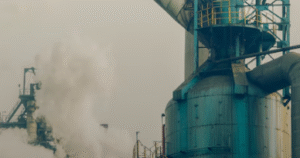$RIG $VAL $NE
#DeepwaterDrilling #OilMarkets #EnergySector #OSD #OffshoreInvestment #CrudeOil #DrillingStocks #MarketOutlook #EnergyTransition #OilExploration #InvestmentTrends #Commodities
A couple of years ago, the offshore drilling (OSD) industry seemed poised for a major rebound. Stocks of leading drilling firms surged post-COVID as rental rates for advanced seventh-generation drillships touched $450,000 per day. With daily rates at multi-year highs, cash flows turned positive, and investors grew optimistic about the sector’s recovery. Earnings per share (EPS) forecasts improved, reflecting increased confidence in long-term profitability. Market sentiment suggested the industry had finally emerged from a prolonged downturn. However, the pace of recovery proved slower than initially anticipated, as capital spending in offshore exploration remained cautious, and macroeconomic variables introduced new uncertainties.
Oil prices, a crucial determinant of offshore drilling activity, have been volatile despite strong global demand. While Brent crude has fluctuated in a moderate range, uncertainty surrounding OPEC+ production policies, geopolitical risks, and fluctuating shale output have prevented a sustained rally in exploration budgets. Oil majors remain hesitant to make large financial commitments, often prioritizing shareholder returns through buybacks and dividends instead of long-term offshore projects. This cautious stance has reduced the number of new contracts being awarded, limiting the immediate growth potential for offshore drillers. Despite this, high-spec assets in key regions like the Gulf of Mexico, Brazil, and West Africa continue to command premium rates, benefiting companies that own modern fleets.
Financially, major players like $RIG (Transocean), $VAL (Valaris), and $NE (Noble Corporation) have seen mixed performances amid the unpredictable recovery. Transocean, with its high exposure to deepwater operations, has faced balance sheet concerns due to its debt-heavy structure but has benefited from its modern fleet and long-term contracts. Valaris has been restructuring efficiently, leveraging improving day rates to bolster earnings. Noble, after merging with Maersk Drilling, has been positioning itself strategically in the premium segment of the market. Despite these efforts, the broader industry’s revival remains dependent on sustained capital commitments from major oil firms. Until these firms allocate larger exploration budgets, drillers will continue facing challenges in securing consistent revenue growth.
Looking ahead, the future of offshore energy remains intertwined with evolving global energy policies and the transition to renewables. While offshore drilling is expected to persist as a cornerstone of global oil production, increased scrutiny on carbon emissions, regulatory hurdles, and competition from alternative energy sources pose long-term risks. However, as easier-to-extract onshore reserves decline and geopolitical risks make certain regions less attractive for shale investment, deepwater projects may regain favor due to their long-term production profiles. Investors should closely monitor energy price trends, corporate spending patterns, and technological advancements in offshore drilling to assess whether the sector can achieve a meaningful, sustained comeback.







Comments are closed.